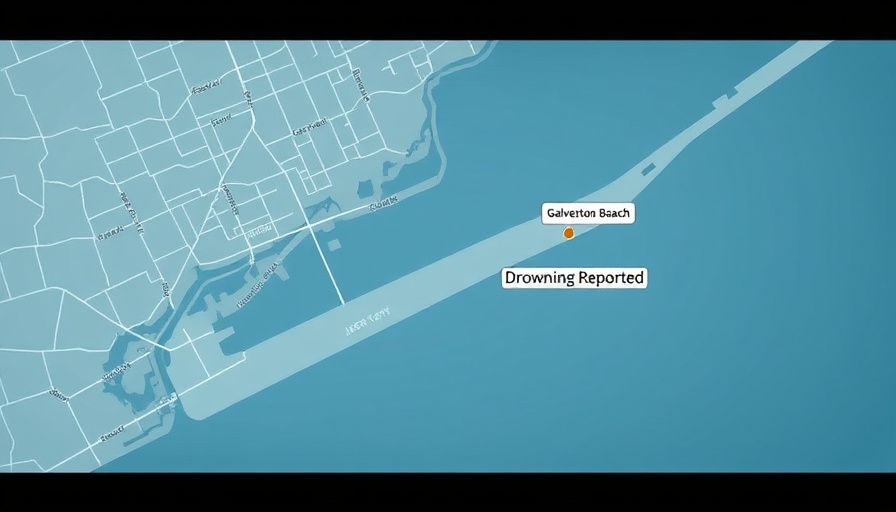
Tragic Incident at Galveston Beach: What Happened?
This past Sunday, tragedy struck at Galveston Beach when a 55-year-old man from Houston lost his life after being pulled from the water. The incident occurred near the popular 31st Street and Seawall Boulevard, a location known for its beautiful views and vibrant beach activities.
The man had been enjoying a day of boogie boarding with his wife when both felt fatigued and attempted to return to shore. While the woman managed to reach safety, her husband did not. Despite the quick response from the Galveston Beach Patrol and efforts to revive him, he was later pronounced dead at a local hospital. This incident serves as a somber reminder of the potential hazards associated with beach activities.
Understanding Beach Safety
While the beach offers relaxation and fun, it can also pose serious risks, especially for those engaging in water sports like boogie boarding, surfing, or swimming. According to local authorities, conditions in open water can change rapidly, leading to dangerous situations that may not be immediately obvious. Riptides and strong currents are threats that swimmers and surfers need to be aware of.
Galveston Beach Patrol emphasizes the importance of knowing your own limits. Waters that appear calm can sometimes conceal strong undercurrents. As beachgoers plan their activities, a solid understanding of surf conditions and potential risks can drastically increase their safety. This aligns with broader safety measures seen in similar beach towns across the U.S., where being educated on water safety is crucial to preventing accidents.
The Social Impact of Drownings
The loss of life at beaches presents not just a personal tragedy but also affects communities at large. As social beings, we naturally gather in these shared spaces for recreation and bonding. However, drownings can instill fear and caution in families, shifting the dynamics of how they interact with the ocean.
A survey conducted by the National Park Service revealed that nearly 90% of families who experienced a drowning incident hesitated to return to the beach in subsequent years. This hesitation may impact local businesses dependent on tourism and family engagement on the shores. Communities are encouraged to bolster preventive measures by offering educational workshops and increased lifeguard presence during peak hours.
Future Predictions: Trends in Beach Safety
The recent drowning underscores a pressing need for improved beach safety protocols nationwide. Experts predict that as climate change alters coastal conditions, the potential for hazardous water activity will increase. Coastal communities may need to invest in technology to monitor water safety in real-time, thereby providing instantaneous alerts to beachgoers about unfavorable conditions.
Initiatives could also involve stronger collaborations among local health departments, emergency services, and educational institutions to promote awareness campaigns aimed at both tourists and residents. Preventing tragedies on the water requires not just beach-specific knowledge but also community engagement and education.
Common Misconceptions About Water Safety
Despite ongoing public awareness efforts, misconceptions about water safety persist, leading to preventable accidents. Many individuals assume that calm, shallow waters are always safe for swimming, a notion that could not be further from the truth.
Furthermore, there is a dangerous myth that strong swimmers are immune to accidents. The reality is that exhaustion can strike anyone, regardless of their swimming skill level. Learning how to recognize signs of fatigue and knowing when to call for help can be lifesaving. To effectively address these issues, local lifeguards and health organizations are urged to promote educational sessions that tackle these misconceptions in community gatherings.
Inspirational Remembrance of Watery Souls
The community's heart feels heavier in light of the recent tragedy, leading to moments of reflection and solidarity with families facing this grief. Events have been organized in Galveston to honor the memory of those who have lost their lives while enjoying the ocean. These ceremonies serve not only as a remembrance but also as platforms to open the conversation about water safety.
“It’s important to remember, while we celebrate life, we also acknowledge the risks we take when we enjoy nature’s beauty,” said a local organizer. These hopeful interactions highlight the resilience of community bonds strengthened under times of distress.
Taking Action for Ocean Safety
As we meditate on the tragic loss of life in Galveston, it’s crucial to take proactive measures toward ensuring safety at our beaches. Responsible swim practices and respectful engagement with our surroundings can contribute significantly to minimizing risks.
Consider organizing or participating in local initiatives that prioritize beach safety education, becoming part of the prevention solution. Together, through education and shared experiences, we can foster safer shores for all to enjoy.
 Add Element
Add Element  Add Row
Add Row 



Write A Comment